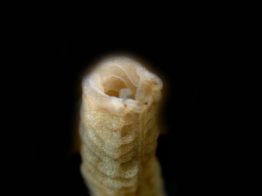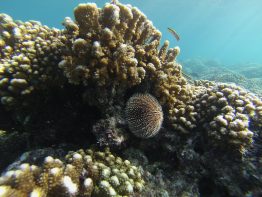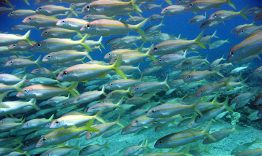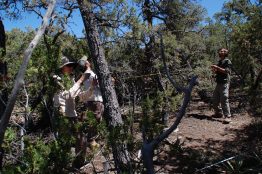What if humans could regrow an amputated arm or leg, or completely restore nervous system function after a spinal cord injury? A new study of one of our closest invertebrate relatives, the acorn worm, reveals that this feat might one day be possible. Acorn worms burrow in the sand around coral reefs, but their ancestral relationship to chordates means they have a genetic makeup and body plan surprisingly similar to ours.
Read more at UW Today »Ocean acidification study offers warnings for marine life, habitats
While most research in the field focuses on the impact of ocean acidification on individual species, new findings from scientists at the University of Washington, University of British Columbia and their colleagues across the globe shows that OA could drive a cascading loss of biodiversity in some marine habitats.
Read more at UW Today »UW Program on Climate Change Director LuAnne Thompson on being a climate scientist
The College of the Environment’s LuAnne Thompson, a faculty member in the School of Oceanography and the director of the Program on Climate Change, has dedicated her career to researching the ocean’s role in climate variability. Having recently returned from France, where she delved into the specifics of measuring an interpreting sea levels from radar altimetry with her academic peers, Thompson reflects on her feelings about the state of climate science and her hopes for the future of climate science outreach and education.
Read more at Program on Climate Change »2 UW scientists lead effort to craft ‘blueprint’ for holistic fisheries management
Two University of Washington professors are leading an effort to help U.S. fisheries consider the larger marine environment, rather than just a single species, when managing a fishery. Tim Essington, a UW professor of aquatic and fishery sciences, and Phil Levin, a UW professor of practice with the School of Environmental and Forest Sciences and lead scientist at The Nature Conservancy, head a taskforce convened by the Lenfest Ocean Program to guide managers on implementing ecosystem-based fisheries management.
Read more at UW Today »Large forest die-offs can have effects that ricochet to distant ecosystems
Major forest die-offs due to drought, heat and beetle infestations or deforestation could have consequences far beyond the local landscape. Wiping out an entire forest can have significant effects on global climate patterns and alter vegetation on the other side of the world, according to a study led by the University of Washington and published Nov. 16 in PLOS ONE. “When trees die in one place, it can be good or bad for plants elsewhere, because it causes changes in one place that can ricochet to shift climate in another place,” said lead author Elizabeth Garcia, a UW postdoctoral researcher in atmospheric sciences.
Read more at UW Today »





